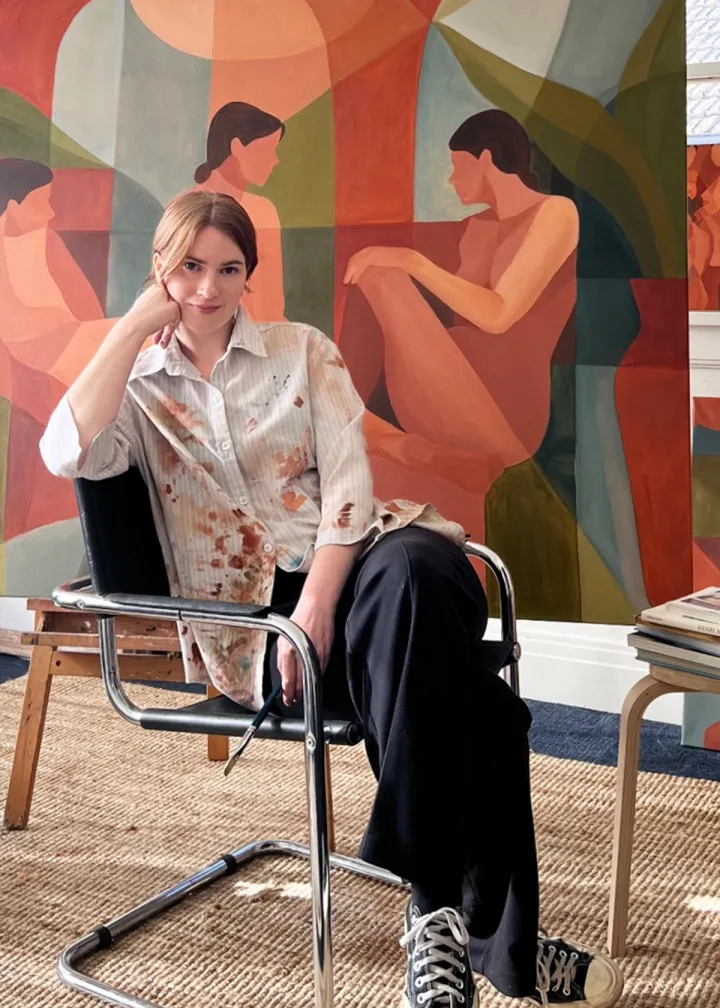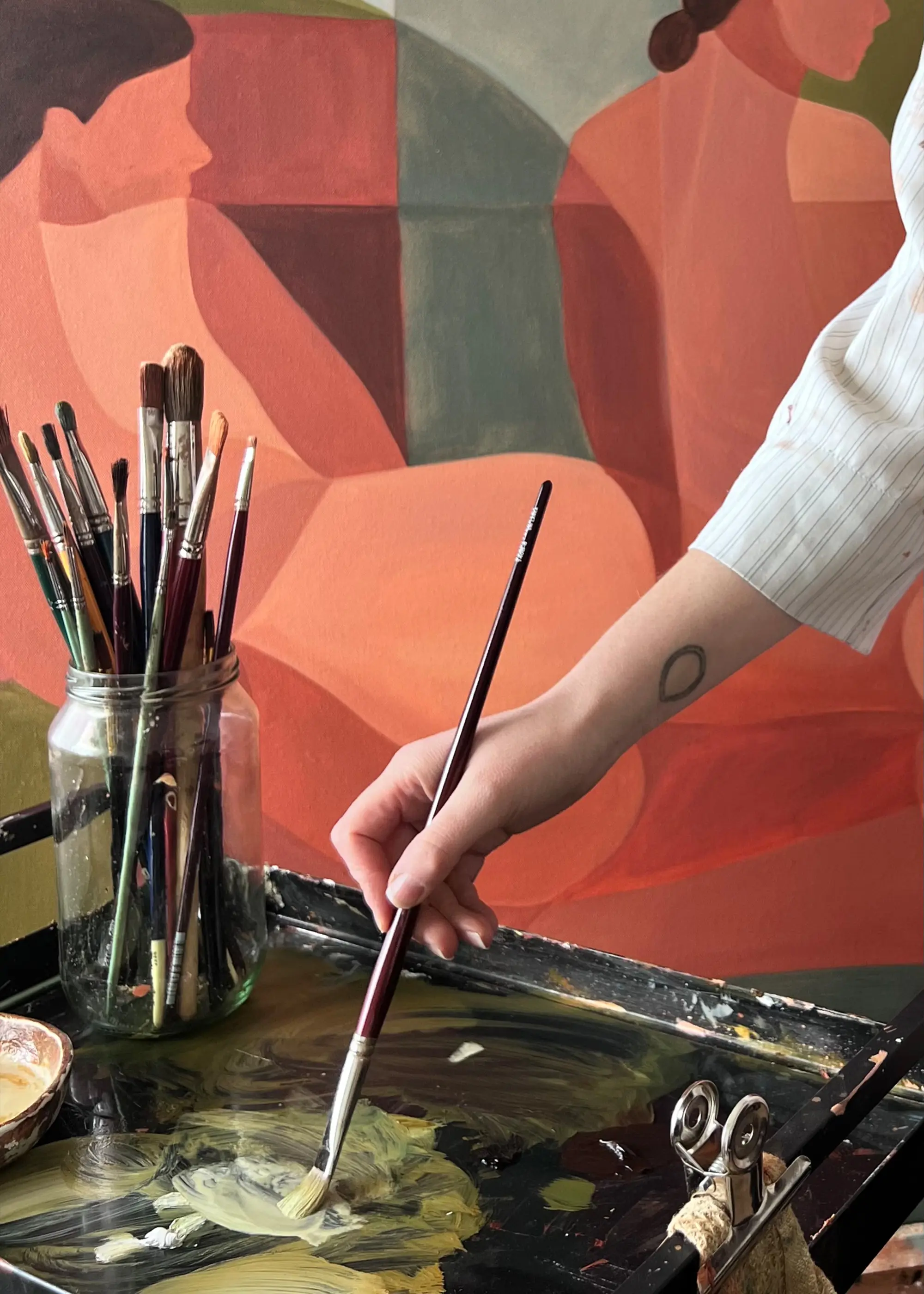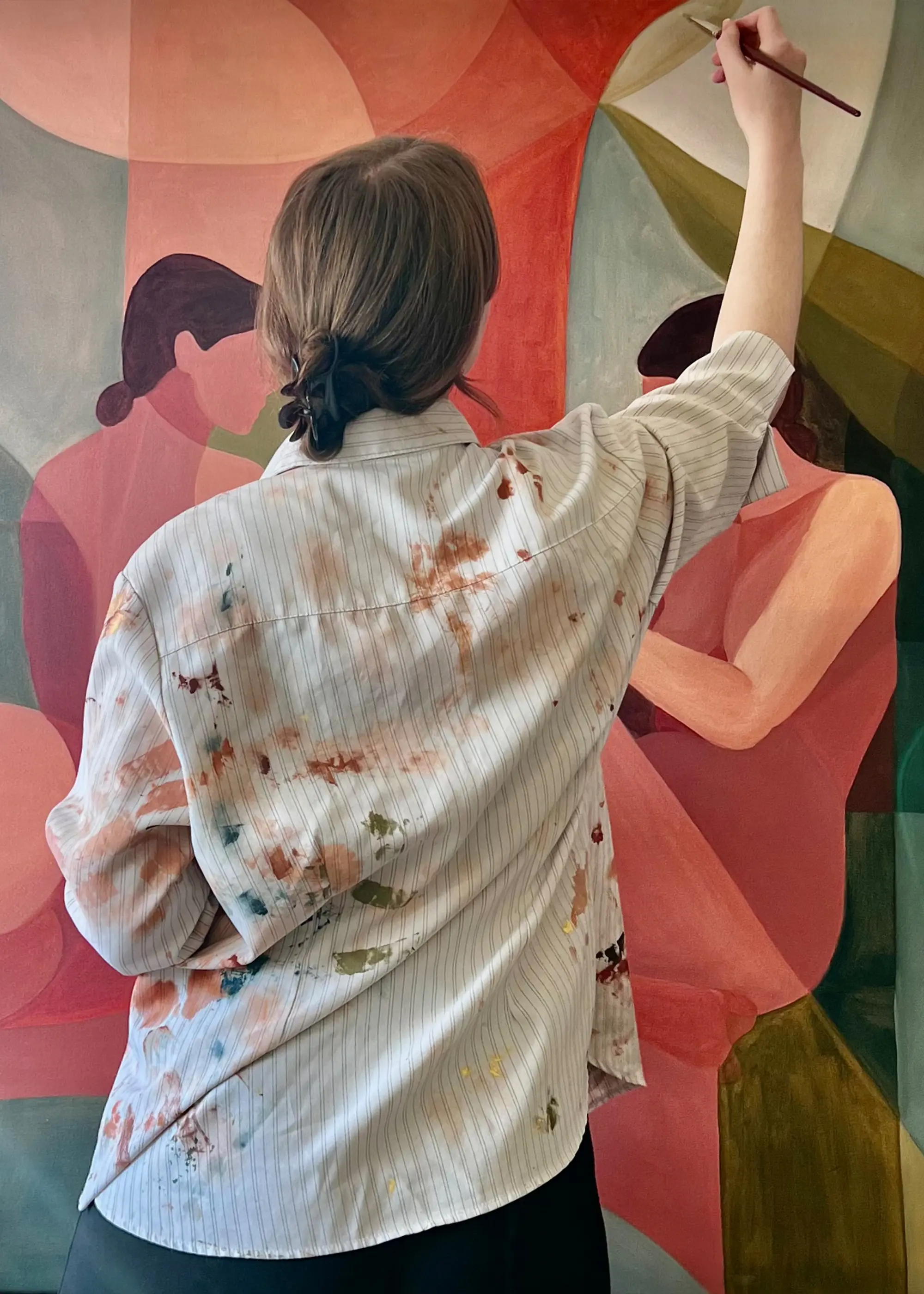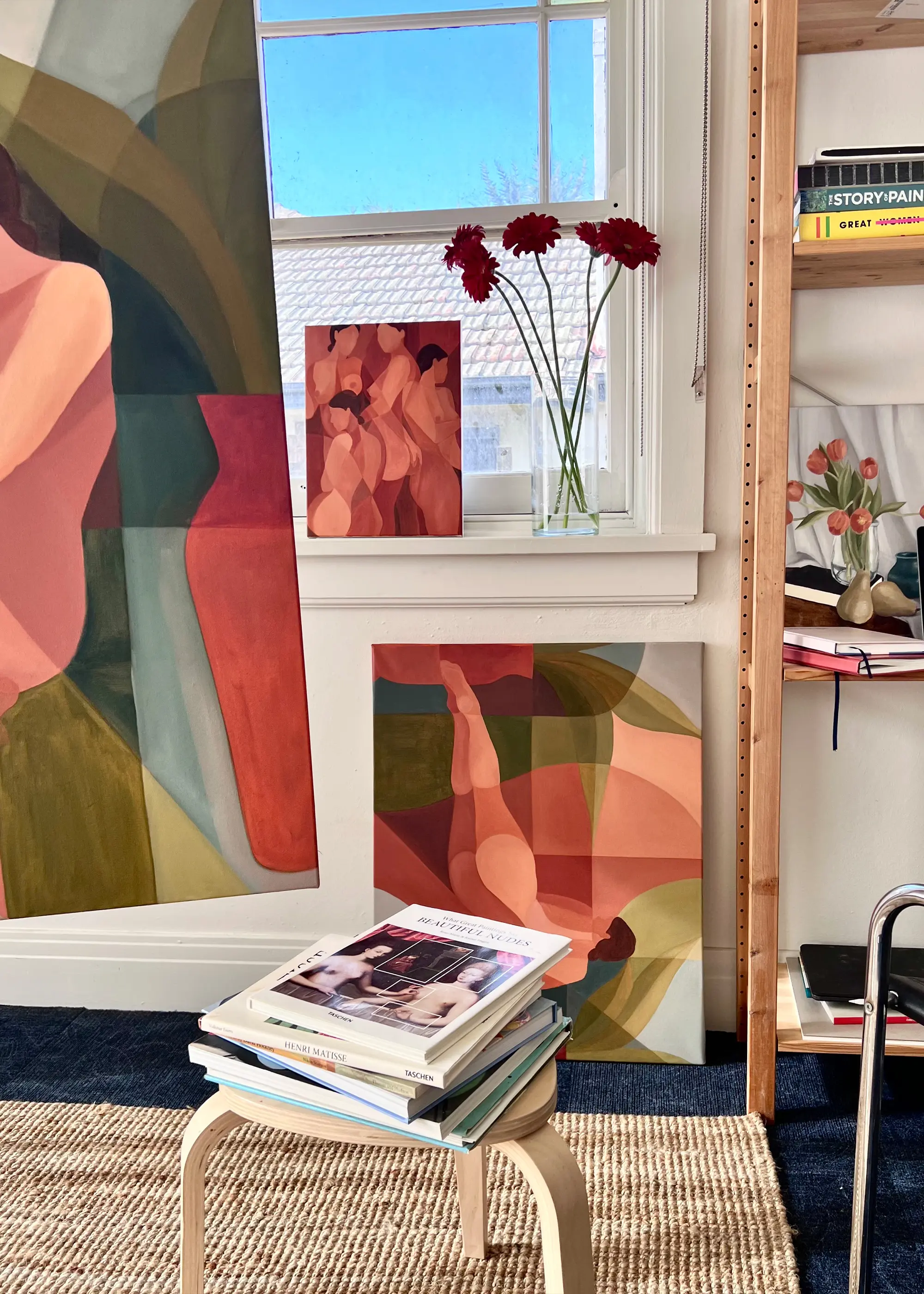
Emma Currie’s Paintings Celebrate the Female Form and the Change of Seasons
The artist has created color-blocked compositions exclusively for Bed Threads.
Since starting in 2017 Bed Threads has championed the work of inspiring creatives, whose dazzling and provocative work offers new windows into the world of art. One such creative we admire and have featured in our The Makers series is contemporary Australian artist Emma Currie.
Emma's art celebrates and explores the beauty and strength of the female form via color-blocked compositions. Her practice is largely influenced by famous nudes from the Renaissance through to the Romantic era, and by artists such as Picasso and Matisse. These works inject the homes they sit in with a unique beauty and contemporary edge.
In an exciting collaboration with Bed Threads, Emma has created two chic artworks inspired by muted brown tones and the turning of the seasons. Autumn I and Autumn II both combine geometric planes of color with the shapely forms of three figures. Each print can hang on its own or be paired with the other.
To celebrate the launch of our exclusive collaboration with Emma Currie, we spoke to the artist about her creative process and how art relates to her personality and who she is.
We're so excited to have your artwork at Bed Threads. Can you walk us through a typical day working as an artist?
Every day is a bit different, to be honest. On a good day, I’ll get up early, walk the dogs, do some yoga, have breakfast and be in the studio by 9am. I’ll do a few hours of admin and then I’ll start on whatever paintings I’m working on at the time. I usually have two or three on the go at once so I’ll choose my colors for the day and switch between them. That’s a good day. Some days are spent sitting in the studio just reflecting, problem-solving and planning. Those days aren’t very productive output-wise, but I’m learning that they’re a part of the process and I’m starting not to feel too bad about needing them.
What motivates you to create?
I can’t really explain it well but most artists will probably tell you they have an intrinsic need to create that has always been a part of them. I’m very lucky that I get to do this for a living because I generally feel pretty miserable if I’m not creating something. Maybe I’m mostly driven to create by the desire not to be miserable.
What is your most important artist tool? Is there something you can’t live without in your studio?
I used to use a small canvas as a paint palette and I would just use it till it was caked in layers of oil paint. I finally got a glass palette but it took me a while to figure out I needed a proper scraper to get the dry paint off the glass in order to start fresh. That was a bit of a game-changer when I bought the proper tool for that. Apart from that I usually have some 80% dark chocolate in the studio. I couldn’t live without chocolate.
How has your style developed over time?
I think my style used to be somewhat more illustrative and probably a bit more abstract. These days I’m trying to combine a slightly abstract style with more realistic elements coming through in places.
What was the inspiration behind these artworks?
I painted them in the Adelaide Hills as the seasons were changing from summer to autumn and there were a lot of beautiful brown hues all over the countryside. The color palette definitely reflects that.
Who are your biggest artistic influences?
For inspiration, I look to artists like Matisse, Picasso, Cézanne, and Milton Avery. Several famous nudes from the renaissance to the romantic era have been very influential throughout my practice as well. Particularly those by Titian, Velázquez, Goya and Manet.
What does your art mean to you and can you tell us a bit about why you think art is important to society?
I see art as a therapeutic tool that can be used by both artists and viewers to access emotions, develop empathy and nurture a sense of wonder among other things. It can influence us by changing our opinions and sparking discourse. In many ways, art acts as a mirror, showing ourselves who we are and what is important to society in a particular cultural moment. It’s an integral part of humanity in every sense.
Enjoyed This?
Discover more amazing artists.

















